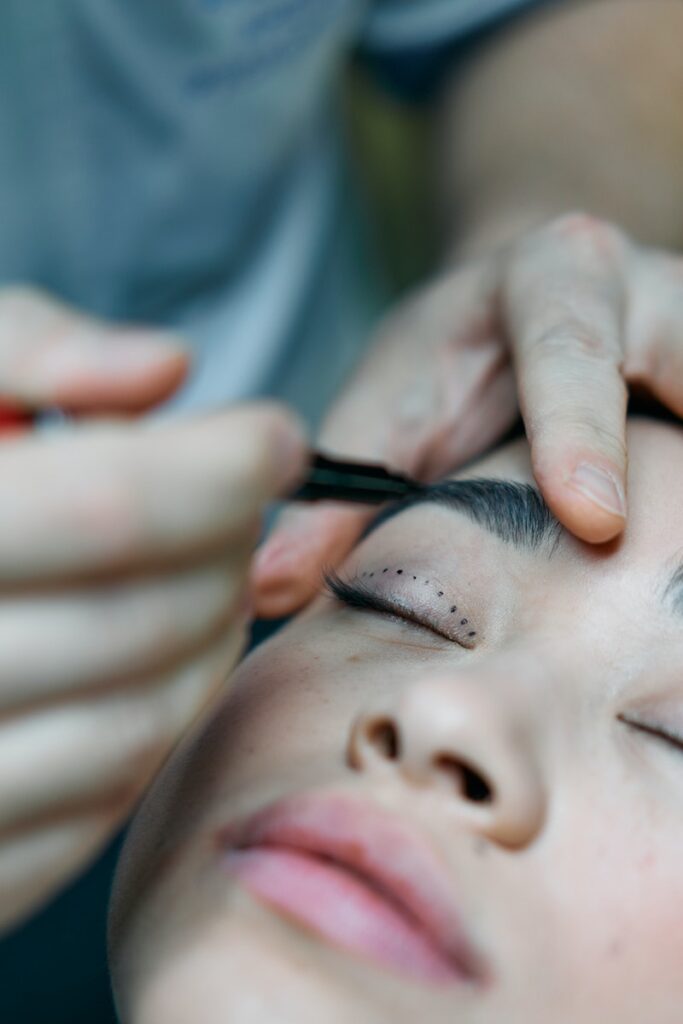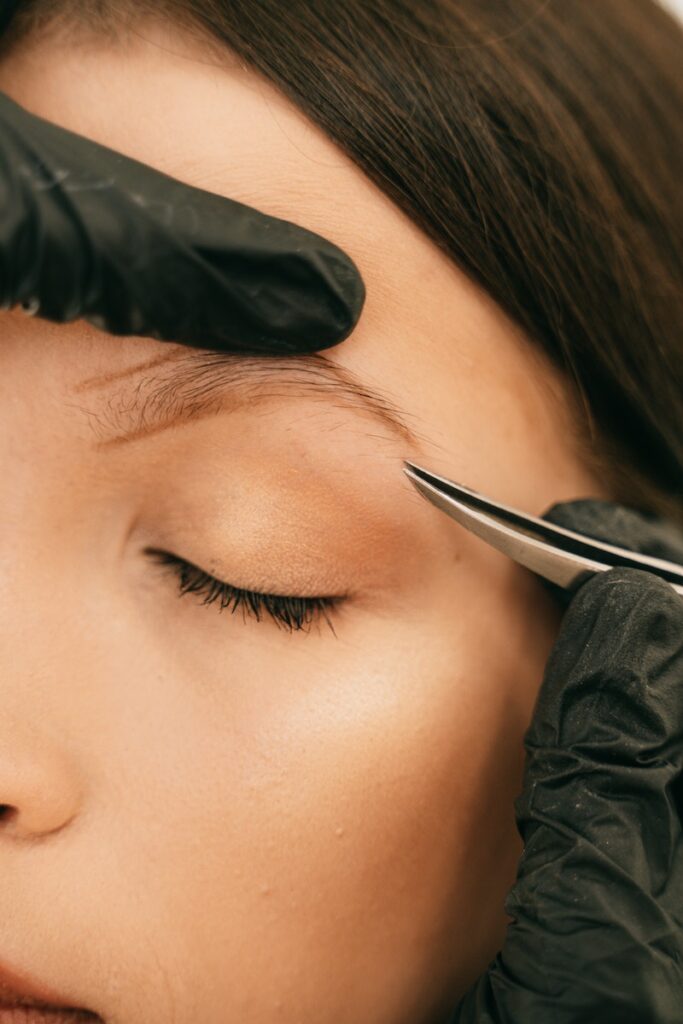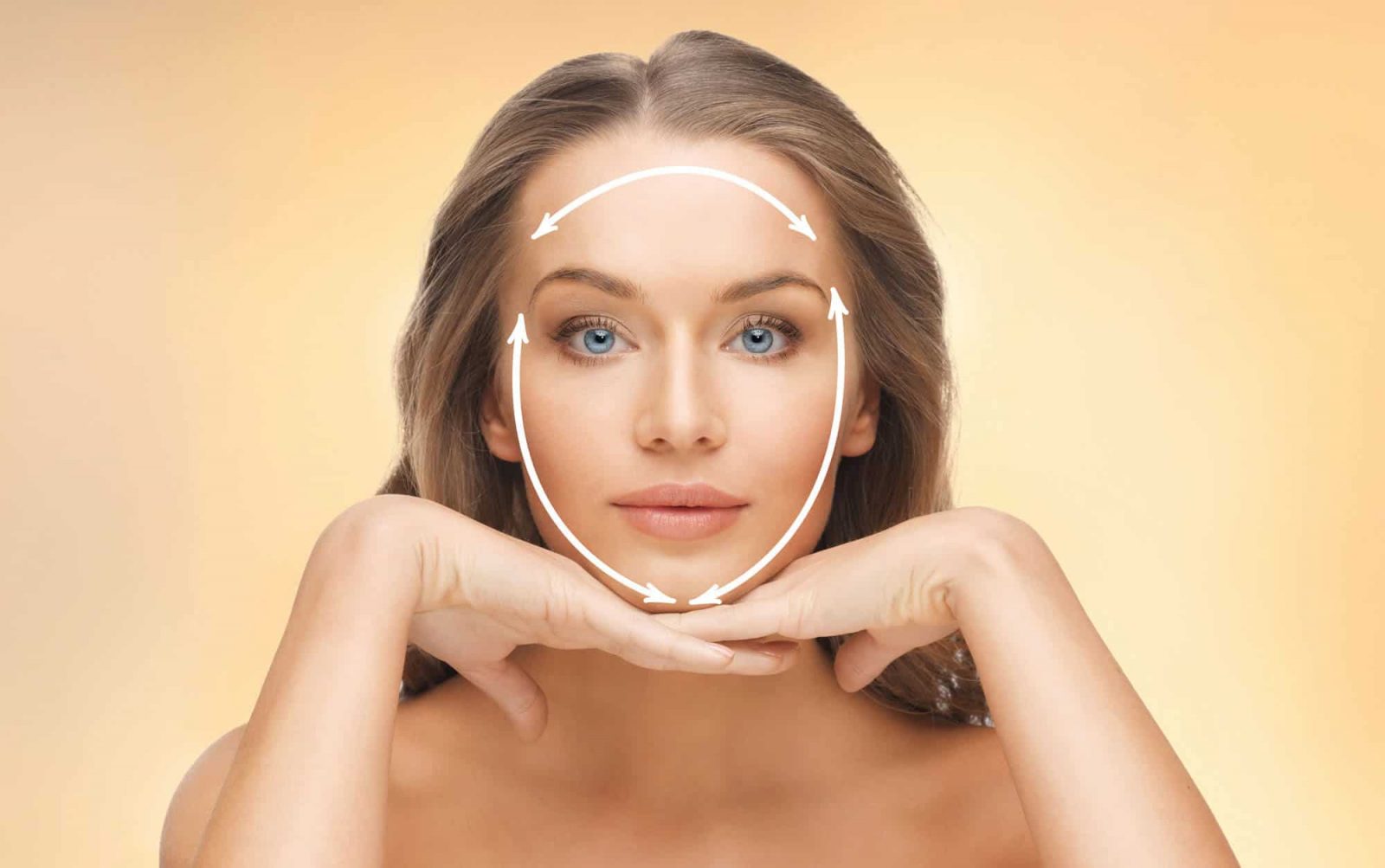Do you have sagging or drooping eyelids that make you look tired or older than you are? Do you have excess skin or fat on your upper or lower eyelids that interfere with your vision or appearance? If so, you might be a candidate for blepharoplasty, a type of cosmetic surgery that removes excess tissue from the eyelids and restores a more youthful and alert look to the eyes.
Blepharoplasty is one of the most common plastic surgery procedures in the world, with millions of people undergoing it every year. In this article, we will explain what blepharoplasty is, how it is done, what are the benefits and risks, and how to prepare and recover from it. We will also answer some frequently asked questions about blepharoplasty.
Table of Contents
What is Blepharoplasty?
Blepharoplasty (pronounced BLEF-uh-roe-plas-tee) is a surgical procedure that removes excess skin, muscle, and fat from the upper and/or lower eyelids. The word blepharoplasty comes from the Greek words blepharon, meaning “eyelid”, and plassein, meaning “to form”
The skin of the eyelids is very thin and delicate, and it tends to stretch and sag over time due to aging, sun exposure, genetics, and other factors. This can cause the eyelids to droop or bulge, creating a tired, sad, or angry expression. It can also create folds or creases that obscure the natural shape of the eye, or even impair the peripheral vision.
Blepharoplasty can correct these problems by removing the excess tissue and tightening the remaining skin and muscle. The result is a smoother, firmer, and more youthful appearance of the eyelids and the surrounding area. Blepharoplasty can also enhance the shape and size of the eyes, making them look more open and alert.
Blepharoplasty can be performed on either the upper or lower eyelids, or both. Depending on the extent of the surgery, it can be done under local or general anesthesia, in an outpatient setting or in a hospital. The surgery usually takes one to three hours to complete.
How is Blepharoplasty Done?
The exact technique of blepharoplasty may vary depending on the individual needs and goals of each patient, but in general, it involves the following steps:
- The surgeon makes small incisions along the natural creases or folds of the eyelids, where they will be less visible after healing.
- The surgeon removes excess skin, muscle, and fat from the eyelids using surgical instruments such as scissors, scalpels, or lasers.
- The surgeon repositions or reshapes the remaining tissue to create a more pleasing contour and symmetry of the eyelids.
- The surgeon closes the incisions with fine sutures or surgical tape.
- The surgeon applies ointment and bandages to protect the wounds and reduce swelling and bruising.
What are the Benefits of Blepharoplasty?
Blepharoplasty can offer both functional and cosmetic benefits for people who are unhappy with their eyelids. Some of these benefits include:
- Improved vision: By removing excess skin or fat that obstructs the peripheral vision, blepharoplasty can improve the visual field and make daily activities such as driving or reading easier.
- Reduced eye strain: By lifting droopy eyelids that weigh down on the eyes, blepharoplasty can reduce eye fatigue and headaches caused by constant squinting or blinking.
- Enhanced appearance: By smoothing wrinkles, eliminating bags, and restoring a natural curve to the eyelids, blepharoplasty can make the eyes look more youthful, refreshed, and attractive.
- Increased confidence: By improving the overall appearance of the face, blepharoplasty can boost self-esteem and social interactions for people who feel self-conscious about their eyelids.
What are the Risks of Blepharoplasty?
As with any surgery, blepharoplasty carries some risks and potential complications that should be discussed with your surgeon before undergoing the procedure. Some of these risks include:
- Infection and bleeding: These are rare but possible complications that can occur after any surgery. They can be prevented by following your surgeon’s instructions on wound care and medication use.
- Dry, irritated eyes: This is a common but temporary side effect that can occur after blepharoplasty due to reduced tear production or exposure of the eyes. It can be treated by using artificial tears or lubricating ointments as prescribed by your surgeon.
- Difficulty closing the eyes: This is an uncommon but serious complication that can occur after blepharoplasty if too much skin is removed from the upper eyelids. It can cause dryness, irritation, infection, or damage to the cornea (the clear front surface of the eye). It may require further surgery or nonsurgical treatments to correct.
- Noticeable scarring: This is a rare but possible complication that can occur after blepharoplasty if the incisions heal poorly or become infected. It can affect the appearance and function of the eyelids. It may require further surgery or nonsurgical treatments to improve.
- Injury to eye muscles: This is a very rare but possible complication that can occur after blepharoplasty if the surgeon accidentally damages the muscles that control the movement of the eyes. It can cause double vision, drooping, or misalignment of the eyes. It may require further surgery or nonsurgical treatments to fix.
- Skin discoloration: This is a rare but possible complication that can occur after blepharoplasty if the skin of the eyelids becomes darker or lighter than the surrounding skin. It can be caused by bruising, inflammation, sun exposure, or medication use. It may fade over time or require further surgery or nonsurgical treatments to even out.
- Temporarily blurred vision or, rarely, loss of eyesight: This is a very rare but possible complication that can occur after blepharoplasty if the surgery causes damage to the optic nerve (the nerve that connects the eye to the brain) or the retina (the light-sensitive layer at the back of the eye). It can result in partial or complete blindness in one or both eyes. It may be irreversible or require further surgery or nonsurgical treatments to restore.
How to Prepare for Blepharoplasty?
Before undergoing blepharoplasty, you will need to have a consultation with your surgeon, who will evaluate your medical history, perform a physical examination, and discuss your expectations and goals. Your surgeon will also explain the procedure in detail, including the risks, benefits, alternatives, and costs.
You will need to follow your surgeon’s instructions on how to prepare for blepharoplasty, which may include:
- Quitting smoking at least two weeks before and after the surgery, as smoking can impair healing and increase the risk of complications.
- Avoiding alcohol, aspirin, ibuprofen, and other blood-thinning medications or supplements for at least a week before and after the surgery, as they can increase bleeding and bruising.
- Arranging for someone to drive you home and stay with you for at least 24 hours after the surgery, as you will not be able to drive or operate machinery while under the influence of anesthesia or painkillers.
- Filling your prescriptions for antibiotics, painkillers, and eye drops or ointments before the surgery, so you have them ready when you need them.
- Packing a bag with comfortable clothes, sunglasses, ice packs, and other essentials for your recovery.
How to Recover from Blepharoplasty?
After blepharoplasty, you will need to follow your surgeon’s instructions on how to care for your eyes and wounds, which may include:
- Applying cold compresses or ice packs to your eyes for 10 to 15 minutes every hour for the first 48 hours after the surgery, then as needed for the next few days, to reduce swelling and pain.
- Keeping your head elevated above your heart for at least a week after the surgery, especially when sleeping, to reduce swelling and pressure on your eyes.
- Using artificial tears or lubricating ointments as prescribed by your surgeon to keep your eyes moist and prevent dryness and irritation.
- Avoiding rubbing, scratching, or touching your eyes or incisions for at least a week after the surgery, as this can cause infection or scarring.
- Cleaning your eyes and incisions gently with sterile water or saline solution as instructed by your surgeon, using cotton balls or pads. Do not use soap, alcohol, or hydrogen peroxide on your eyes or incisions.
- Taking antibiotics and painkillers as prescribed by your surgeon to prevent infection and relieve discomfort. Do not take any other medications or supplements without consulting your surgeon first.
- Wearing sunglasses and sunscreen whenever you go outside for at least six months after the surgery, as your eyes will be more sensitive to light and UV rays. Avoid direct sun exposure as much as possible.
- Avoiding strenuous activities such as exercise, sports, lifting heavy objects, bending over, swimming, or driving for at least two weeks after the surgery, as they can increase blood pressure and bleeding in your eyes. Resume normal activities gradually as advised by your surgeon.
- Avoiding makeup, contact lenses, alcohol, tobacco, and hot showers or baths for at least two weeks after the surgery, as they can irritate your eyes or incisions. Resume using them gradually as advised by your surgeon.
You will need to visit your surgeon for follow-up appointments at regular intervals after blepharoplasty. Your surgeon will monitor your healing progress and remove any stitches or tape from your incisions. Your surgeon will also advise you on when you can return to work and other activities.
The recovery time from blepharoplasty varies from
person to person, depending on the extent of the surgery and the individual healing process. In general, most people can expect to see the final results of blepharoplasty within six months after the surgery, when the swelling and bruising have subsided and the scars have faded.
What are the Alternatives to Blepharoplasty?
Blepharoplasty is not the only option for improving the appearance and function of the eyelids. There are some nonsurgical alternatives that may be suitable for some people, depending on their goals and preferences. Some of these alternatives include:
- Botox injections: Botox is a type of neurotoxin that temporarily paralyzes the muscles that cause wrinkles and frown lines. It can be injected into the forehead, brow, or crow’s feet area to lift and smooth the upper eyelids and reduce sagging or drooping. The effects of Botox last for about three to six months, and the procedure can be repeated as needed.
- Dermal fillers: Dermal fillers are substances that are injected into the skin to restore volume and plumpness. They can be used to fill in hollows or depressions under the eyes, smooth out wrinkles or creases around the eyes, or enhance the shape and size of the eyes. The effects of dermal fillers vary depending on the type and amount used, but they usually last for six to 18 months, and the procedure can be repeated as needed.
- Laser resurfacing: Laser resurfacing is a type of skin treatment that uses a beam of light to remove the outer layer of skin and stimulate the growth of new collagen and elastin. It can be used to improve the texture, tone, and elasticity of the skin around the eyes, reduce fine lines and wrinkles, and lighten dark circles or pigmentation. The effects of laser resurfacing can last for several years, but the procedure may require multiple sessions and a longer recovery time than blepharoplasty.
- Chemical peels: Chemical peels are a type of skin treatment that uses a solution of acids to peel off the outer layer of skin and reveal a smoother and brighter complexion. They can be used to improve the appearance of mild to moderate signs of aging around the eyes, such as sun damage, discoloration, or roughness. The effects of chemical peels can last for several months, but the procedure may require multiple sessions and a shorter recovery time than blepharoplasty.
Conclusion
Blepharoplasty is a cosmetic surgery that removes excess skin, muscle, and fat from the eyelids and restores a more youthful and alert look to the eyes. It can also improve vision by eliminating obstructions or impairments caused by sagging or bulging eyelids.
Blepharoplasty is a safe and effective procedure that can offer both functional and aesthetic benefits for people who are unhappy with their eyelids. However, it also carries some risks and potential complications that should be weighed against the expected outcomes.
Blepharoplasty is not suitable for everyone, and it is not a permanent solution for aging or other factors that affect the eyelids. Therefore, it is important to consult with a qualified plastic surgeon who can assess your individual needs and goals, explain the procedure in detail, and advise you on whether blepharoplasty is right for you.
FAQs
Here are some frequently asked questions about blepharoplasty:
- Q: How much does blepharoplasty cost?
- A: The cost of blepharoplasty varies depending on several factors, such as the surgeon’s fees, the anesthesia fees, the facility fees, the extent of the surgery, and the geographic location. According to [the American Society of Plastic Surgeons], the average cost of blepharoplasty in 2020 was $3,282 for upper eyelid surgery and $3,156 for lower eyelid surgery. However, this does not include other expenses such as preoperative tests, postoperative medications, or follow-up visits. Therefore, it is advisable to ask your surgeon for a detailed estimate before undergoing blepharoplasty.
- Q: Is blepharoplasty covered by insurance?
- A: Blepharoplasty is usually considered an elective cosmetic procedure that is not covered by most health insurance plans. However, some insurance plans may cover part or all of the cost of blepharoplasty if it is medically necessary to improve vision or treat a condition such as ptosis (drooping eyelid), ectropion (outward turning eyelid), or entropion (inward turning eyelid). Therefore, it is advisable to check with your insurance provider before undergoing blepharoplasty.
- Q: How long do I have to wait before I can wear makeup after blepharoplasty?
- A: You should avoid wearing makeup for at least two weeks after blepharoplasty, as makeup can irritate your eyes or incisions and increase the risk of infection or scarring. After two weeks, you can resume wearing makeup gradually as advised by your surgeon, but you should use gentle and hypoallergenic products and avoid applying them directly on your incisions. You should also avoid using eyelash curlers or mascara for at least six weeks after blepharoplasty, as they can pull on your eyelashes and damage your eyelids.
- Q: How long do I have to wait before I can wear contact lenses after blepharoplasty?
- A: You should avoid wearing contact lenses for at least two weeks after blepharoplasty, as contact lenses can dry out your eyes and interfere with your healing process. After two weeks, you can resume wearing contact lenses gradually as advised by your surgeon, but you should use lubricating eye drops and clean your lenses thoroughly before and after wearing them. You should also avoid wearing hard or rigid contact lenses for at least six months after blepharoplasty, as they can cause pressure or friction on your eyelids.
- Q: How long do the results of blepharoplasty last?
- A: The results of blepharoplasty are usually long-lasting, but they are not permanent. The aging process and other factors such as sun exposure, genetics, lifestyle, and health conditions can affect the appearance and function of the eyelids over time. Therefore, some people may need or want to have a revision or touch-up surgery after several years to maintain or enhance their results. However, most people are satisfied with their results for many years after blepharoplasty.






